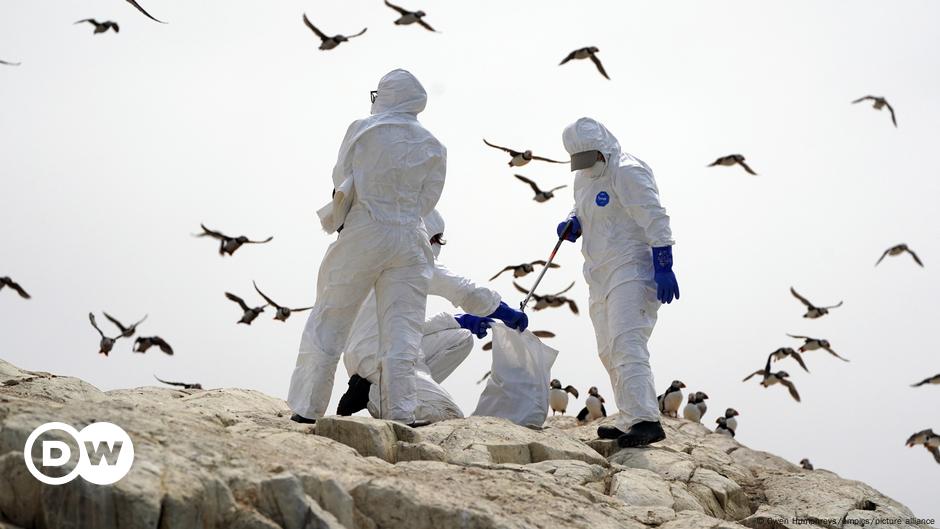It is only a matter of time before highly invasive avian influenza viruses such as H5N1 spread around the world. The pathogen reaches regions such as South America via wildlife, where avian influenza has so far not been documented.
This resulted in massive deaths, not only of birds but also of mammals. Thousands of seals, otters and sea lions have been found dead along the Pacific coasts of Chile and Peru.
Poultry production problems
According to the Scientific Working Group on Avian Influenza and Wild Birds established by the United Nations, highly contagious strains of the H5N1 and H5N8 viruses likely originated from poultry farms in East Asia.
Professor Timm Harder from the Friedrich Loeffler Institute (FLI) in Greifswald said: “The dramatic expansion of poultry production worldwide, especially in China and Southeast Asia, has led to to address the current dramatic spread of particularly aggressive pathogens.” National Avian Influenza Reference Laboratory.
Migratory birds carry virus
In the past, when bird flu was discovered on poultry farms, thousands of animals were killed. In this way, the virus is eliminated and cannot enter the wild bird population.
But this has changed since the summer of 2021, Timm Harder told Deutsche Welle: “Due to special breeding methods in Asia, for example, when ducks are driven into harvested rice fields “When contact occurs between populations. From wild birds and infected duck birds from farm animals. This results in the virus being transmitted to wild animals and then further through migratory birds.”
Essentially, wild bird populations living in water are reservoirs of low-pathogenic influenza A viruses, “but when these harmless viruses mix with highly pathogenic H5N1 variants, the result is very dangerous variants, This could result in expanded host range or new pathogenicity,” explains Harder.
Seasonality no longer exists
In the past, bird flu mostly appeared in autumn and winter. It comes with migratory birds from the northeast and disappears again in the spring when the birds return.
But that seasonality is gone: “The virus has successfully adapted to wild bird populations that live in the water, and it can now be found year-round. This is what is happening now in North America and will continue to be Growing in the South. “The same goes for America,” Harder said.
Mammals are also at risk
Mammals can also become infected if they eat infected or dead wild birds. “When you have such massive mortality among seabirds that breed in colonies, this particularly attracts predators such as foxes, martens, and even seals and otters. These animals ingest a very high dose of the virus and they exploit it to continue to reproduce in these mammals,” Harder explained.
So far, there is no clear evidence that the virus can be transmitted between mammals. However, in Latin America, where tens of thousands of sea lions have died from the virus, there is suspicion of possible sea lion-to-sea lion transmission there. If the virus does adapt, this could also pose a great danger to humans. So far, cases of human infection have been very rare. “That could change soon,” added Tim Harder.
If human infections with avian influenza do become more frequent in the future, appropriate vaccines will be needed. To be sure, the World Health Organization (WHO) has developed suitable vaccine candidates for the current H5N1 virus. If necessary, vaccine production can begin immediately.
(millions/ms)

